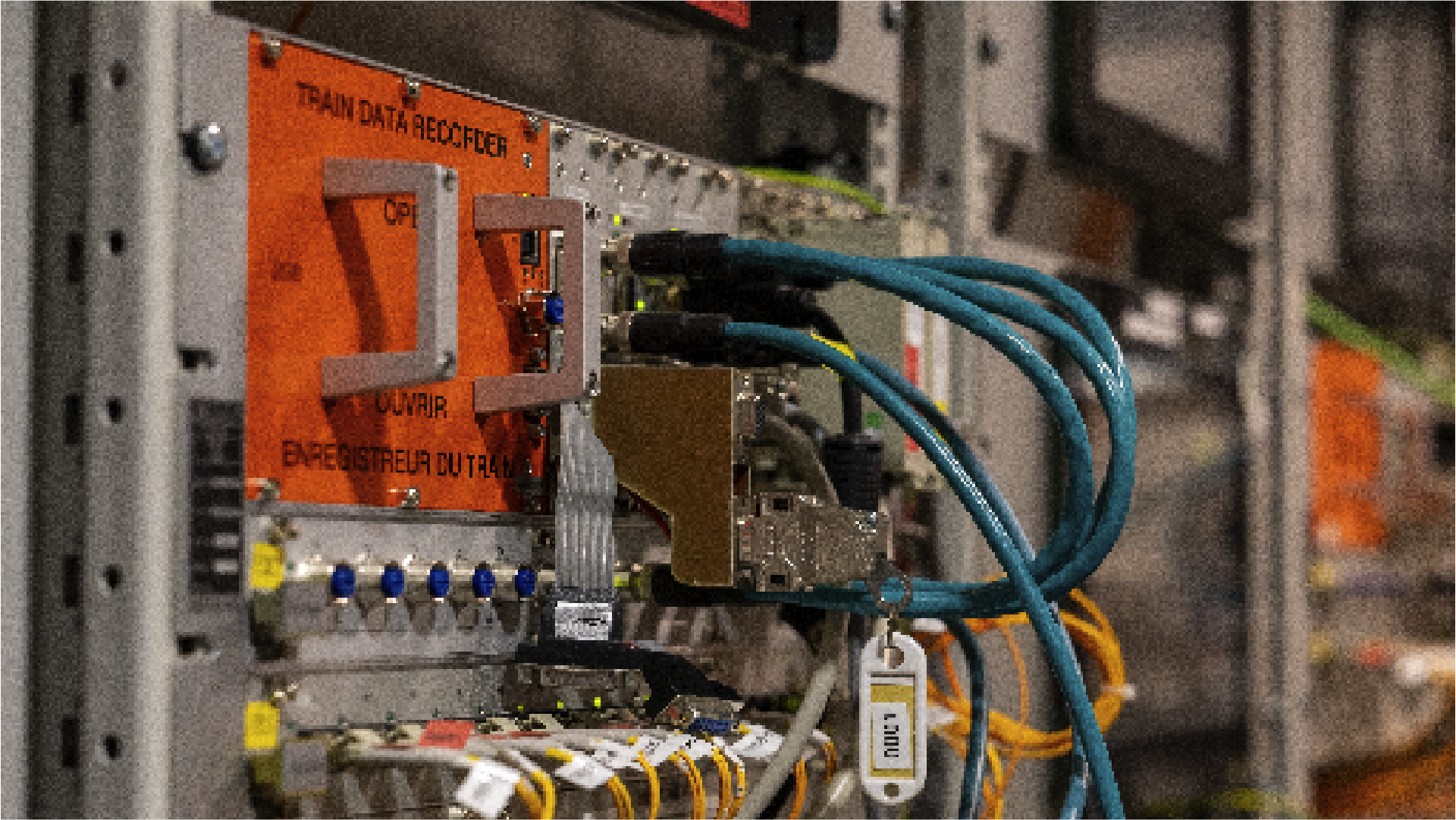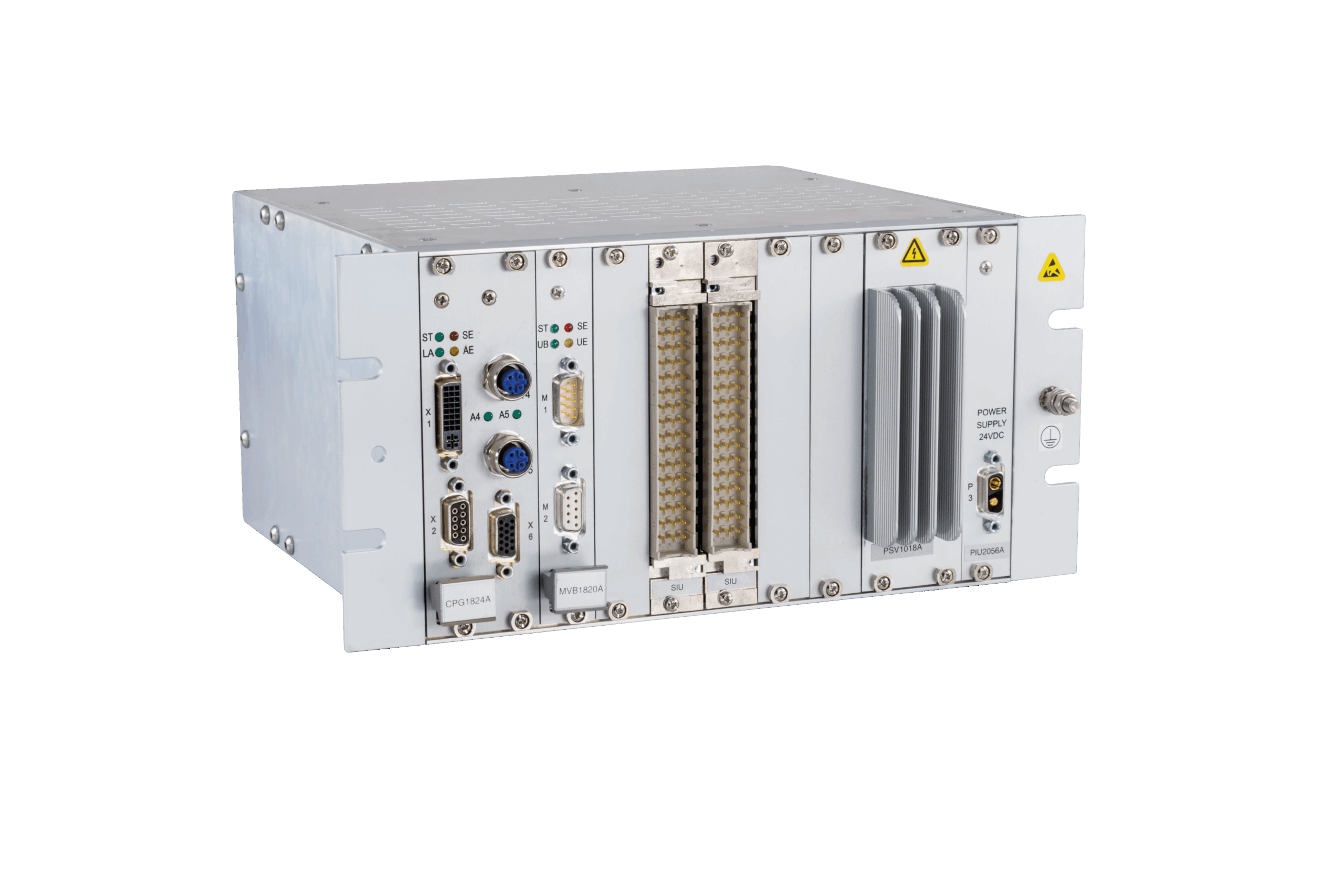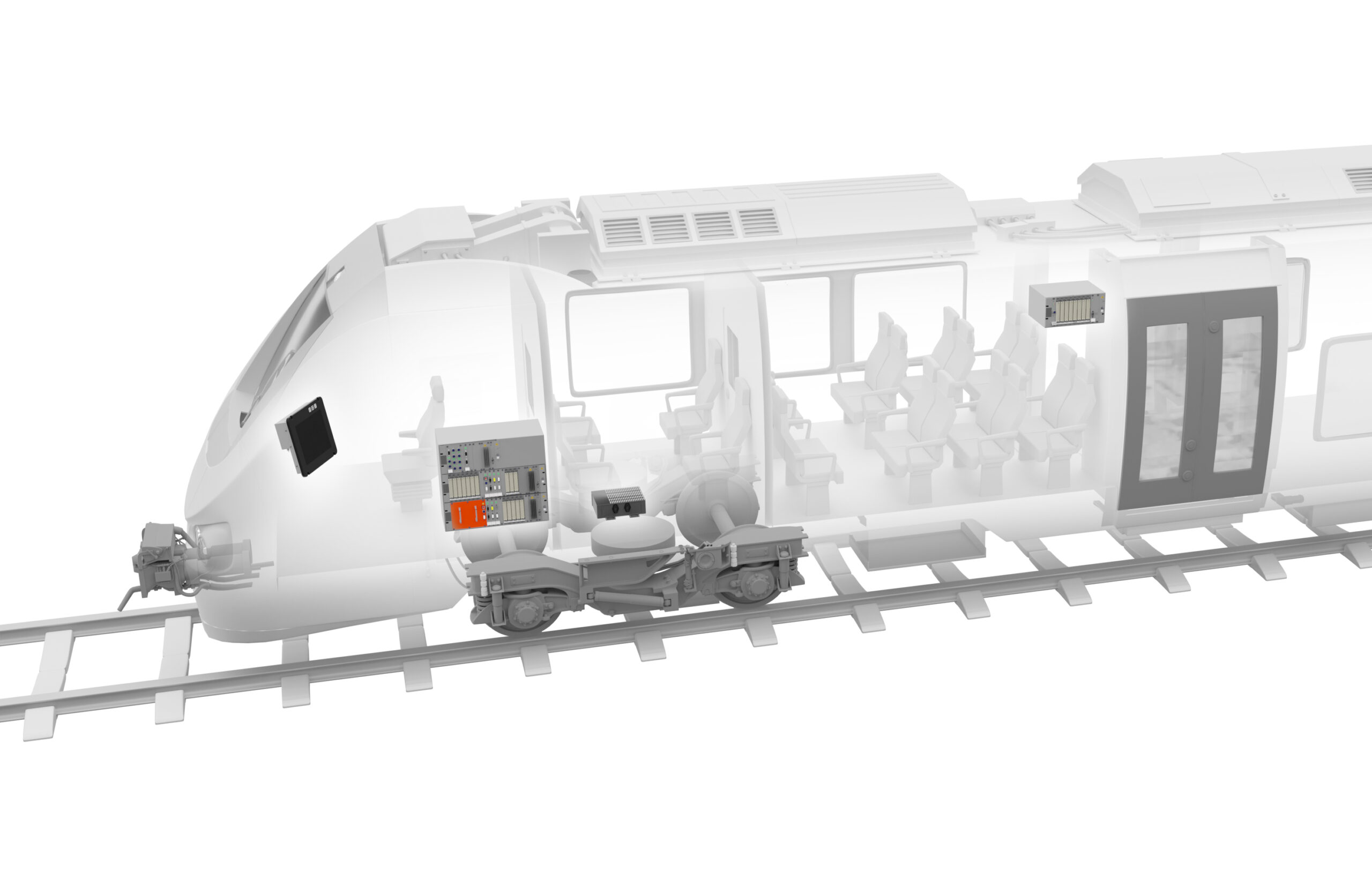The Train Communication Network (TCN) is the backbone of a Train Control and Management System (TCMS). It provides the communication infrastructure that links the various control units and subsystems across the train. It forms the foundation of the TCMS, linking everything from HVAC and doors to diagnostics and safety systems.
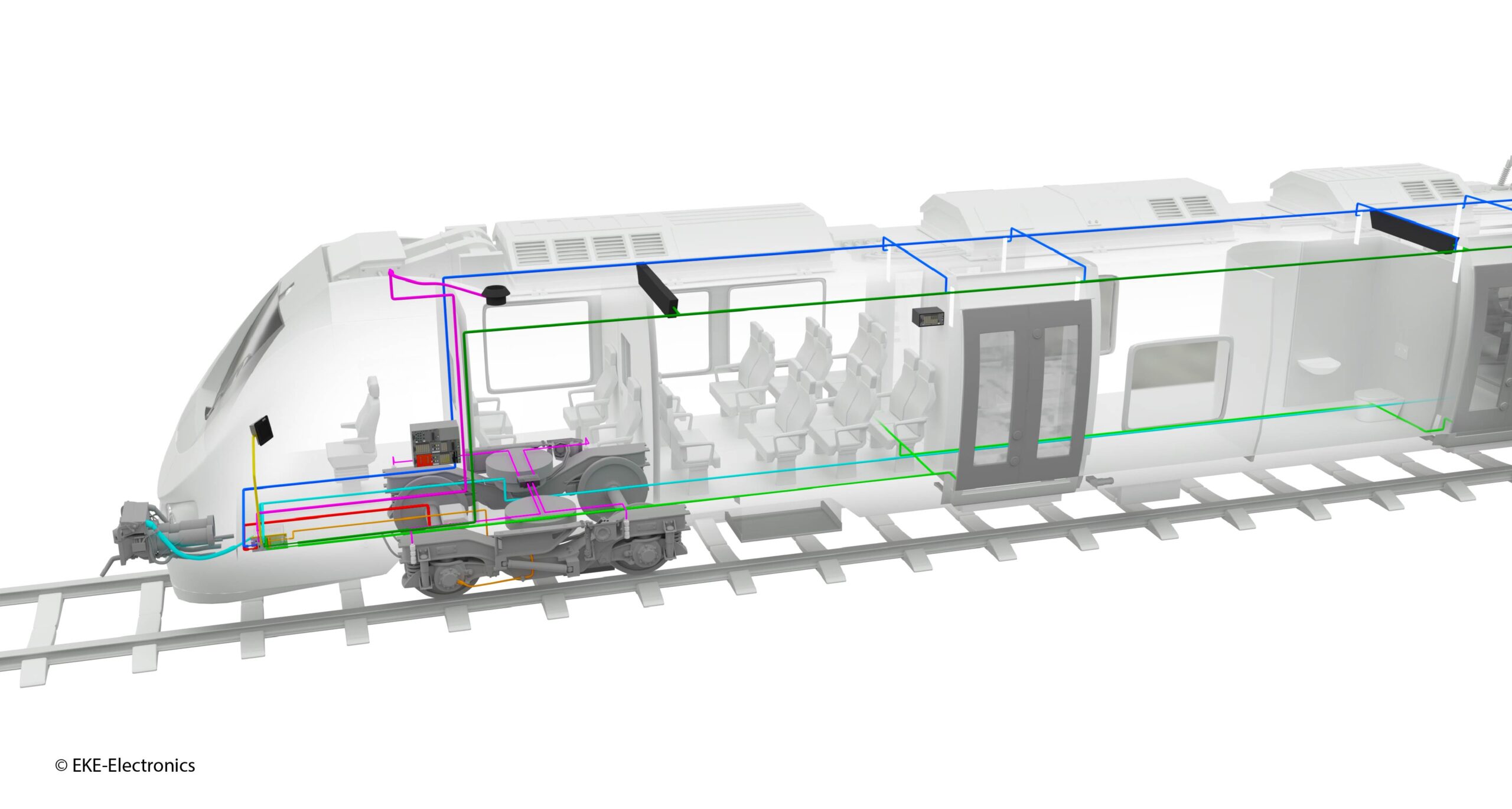
What does the TCN do?
The TCN performs the following actions:
- Transmit control commands to subsystems
- Communicate with other vehicle control units in a consist
- Enable real-time control and monitoring of critical systems.
- Collect diagnostic and status data
- Interface with passenger information, safety functions, and sometimes external networks (e.g. signalling)
- Support safety-critical applications with deterministic communication protocols.
With modern Ethernet-based architectures, TCMS can also integrate IP-based devices, support remote condition monitoring, and enable over-the-air updates.
How are Train Communication Networks structured?
The Train Communication Network typically consists of two hierarchical levels:
- Train Backbone Network (TBN): Connects different vehicles (or cars) in the train. It enables communication between the TCMS and other systems located in each car.
- Vehicle Bus Network (VBN): Connects subsystems within a single vehicle (e.g., HVAC, doors, brakes, displays). This allows local control and monitoring at the vehicle level.
This layered architecture separates inter-vehicle and intra-vehicle communication to optimise performance, modularity, and fault tolerance.
What are the key components of a TCN?
The key components of a train communication network are shown in the diagram below.

ED = End Device i.e. HVAC, Doors, traction equipment
Train Control and Management System (TCMS)
The TCMS acts as the central control and coordination system, managing data exchange across all communication layers. It interfaces with both train-wide and vehicle-level networks, handles diagnostics, and issues control commands to various subsystems.
Train Backbone Network (TBN)
The Train Backbone Network connects multiple vehicles (or cars) in a trainset and is typically implemented using Ethernet Train Backbone (ETB) or Wire Train Bus (WTB). It enables coordinated communication across the train, supporting functions such as passenger information systems, diagnostics, and train-wide control. It enables communication between the TCMS and Vehicle Control Units (VCUs) located in each car.
Vehicle Bus Network (VBN)
The Vehicle Bus links subsystems within a single vehicle or car, using technologies such as Multifunction Vehicle Bus (MVB), Ethernet Consist Network (ECN) or CAN. It supports communication between key systems. This allows local control and monitoring at the vehicle level.
Gateways
Gateways enable communication between different network technologies or protocols, translating messages to ensure interoperability. They are particularly important in refurbishment projects where legacy and modern systems must work together.
Communication Controllers and Switches
Communication controllers manage network traffic, while Ethernet switches, WTB gateways, and MVB repeaters ensure reliable data routing and support features such as redundancy and traffic prioritisation.
Cabling and Connectors
The physical infrastructure comprising cables, connectors, and mounting interfaces ensures secure and robust communication between all devices. These components are selected for railway-specific requirements, including resistance to vibration, fire, and electromagnetic interference.
Human-Machine Interfaces (HMI)
HMIs include driver displays, diagnostic screens, and maintenance terminals that allow operators and service personnel to monitor and interact with onboard systems.
Common communication technologies
Modern Train Control and Management Systems (TCMS) rely on robust and efficient communication networks to ensure safe, coordinated, and responsive operation across all onboard systems. These networks enable data exchange between subsystems such as traction, braking, doors, passenger information systems, and diagnostics. Over the years, a variety of communication technologies have been adopted in the rail industry, each with its own role, technical characteristics, and level of suitability for different applications.
This section outlines the most commonly used train communication technologies, including WTB, MVB, Ethernet, CAN, and serial links.
Wire Train Bus (WTB)
- Connects multiple vehicles across the trainset
- Serial, master/slave architecture with built-in redundancy
- Linear daisy-chain topology across up to 32 nodes
- Fixed configuration; often vendor-specific
- Mainly used in legacy fleets for inter-car communication
Multifunction Vehicle Bus (MVB)
- Used as the Vehicle Bus (VB)
- Deterministic and time-triggered communication
- Supports up to 4096 devices with predefined addresses
- Suited for safety-critical and real-time control systems
- Common in legacy and some modern trains due to reliability
Ethernet (ETB / ECN)
- Serves as the train backbone and vehicle-level communication
- Switched Ethernet (IP-based); supports 100 Mbps to 1 Gbps
- Redundant topologies (ring/ladder) with strong fault tolerance
- Highly scalable with dynamic configuration
- Preferred choice for new builds and future-proof systems
CAN (e.g., CANopen)
- Used for field-level control (traction, brakes, I/O)
- Event-triggered communication
- Typical data rates: 125 kbps to 1 Mbps
- Supports ~100 devices per network
- Still relevant for subsystem control despite legacy status
Serial Links (e.g., RS-485)
- Legacy point-to-point or multidrop connections
- Used in older subsystems like HVAC and door control
- Low data rates (typically up to 115 kbps)
- Minimal or no redundancy; vendor-specific protocols
- Not suited for modern, scalable systems
TCNs can use a mixture of these communication technologies depending upon the subsystems in use. Gateways allow integration between these networks, enabling translation from one protocol to another.
Communication Network Topologies in Trains
In the context of train communication networks, topology refers to the physical and logical arrangement of devices and wiring. The choice of topology influences reliability, performance, and scalability, and is often determined by the requirements of the specific train system. Below are the most common topologies used in rolling stock applications:
Tree Topology
In a tree topology, devices are connected in sequence along a single communication path. This is typical for train-wide systems such as the Wire Train Bus (WTB), where carriages are connected in a daisy-chain manner.
- Advantages: Simple to implement across cars
- Limitations: A fault in one segment can disrupt the entire line if redundancy is not implemented

Ring Topology
A ring topology connects devices in a closed loop, allowing data to travel in both directions. Used in some Ethernet Train Backbones (ETB) with redundancy protocols such as RSTP or MRP.
- Advantages: High fault tolerance; communication can continue if one segment fails
- Limitations: More complex configuration and higher component count
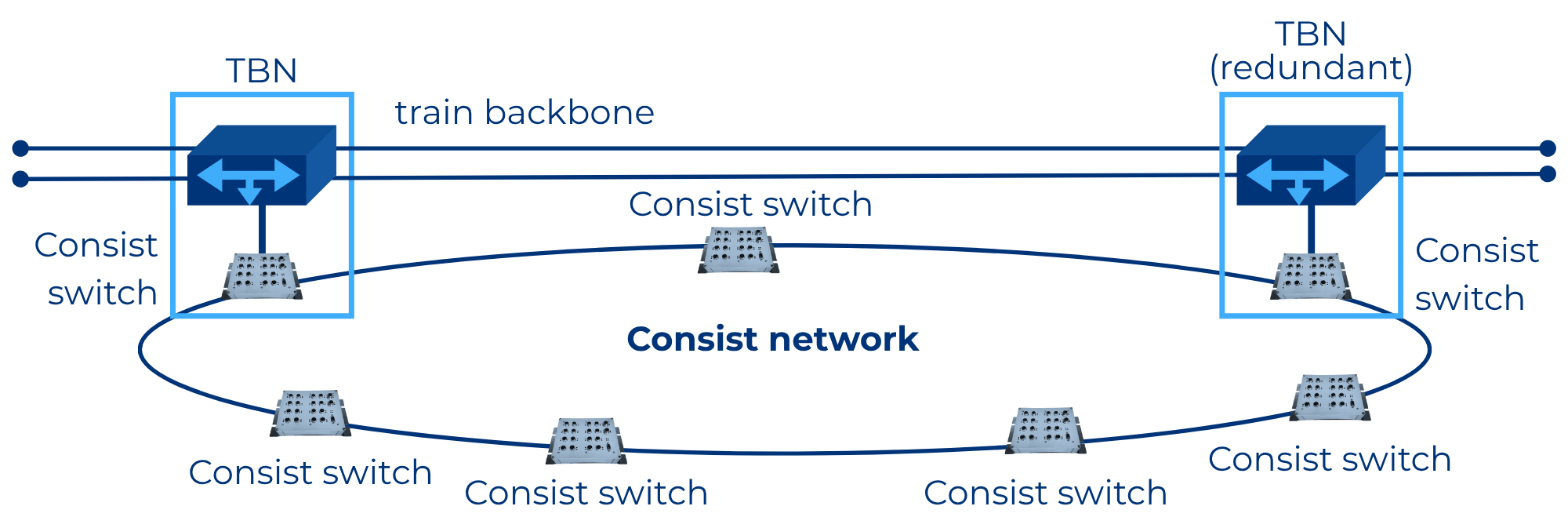
Ladder Topology
In a ladder topology, devices are connected in a hierarchical structure resembling the rungs of a ladder.
- Advantages: Easy to scale; easy to isolate faults;
- Limitations: A fault in one segment can disrupt the entire line if redundancy is not implemented
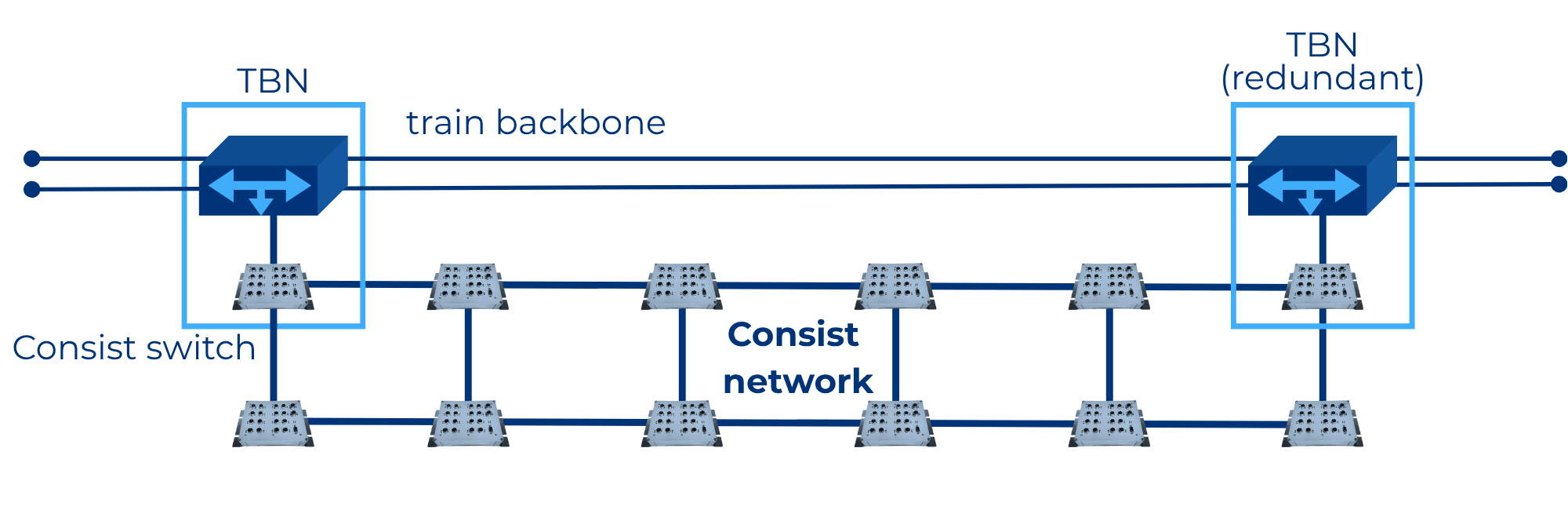
Redundancy and Reliability
Redundancy is a critical aspect of train communication network design, ensuring continued operation in the event of a fault or hardware failure.
TCNs typically include:
- Redundant topologies and devices to ensure continued operation in the event of a failure
- Hot standby configurations for critical nodes, such as TCMS central units
- Deterministic communication (especially on MVB) to support real-time control tasks
Modern Ethernet-based TCNs also include mechanisms to ensure Quality of Service (QoS), network segregation (e.g., VLANs), and prioritised message handling.
Which Standards Govern TCN?
Key standards include:
- IEC 61375 – Communication network and protocol architecture
The TCN is standardised under:
- IEC 61375-1: General architecture and principles
- IEC 61375-3-1 (MVB) and IEC 61375-3-3 (CANOpen): Legacy and low-level field buses
- IEC 61375-2 series: Ethernet Train Backbone (ETB), Ethernet Consist Network (ECN), and related management protocols
These standards promote multi-vendor interoperability, allowing systems and components from different suppliers to work together reliably in the same vehicle.
Does TCN Integrate with Safety Applications?
Yes. Safety applications in a Train Communication Network are implemented using safety-certified hardware and software developed in accordance with railway standards such as EN 50126, EN 50716 (previously EN 50128), and EN 50129. They rely on safe communication protocols such as SDTv2 (defined in IEC 61375-2-3). Communication protocols, such as MVB or Ethernet and incorporate safety layers that ensure reliable message delivery through error checking, sequencing, and timeouts. These applications are often segregated from non-safety functions and undergo rigorous validation and monitoring to ensure predictable and fail-safe operation of critical systems such as Automatic Selective Door Operation (ASDO), Hot Axle Box Detection and Vigilance Control System.
What Are the Key Cybersecurity Requirements for Train Communication Networks?
As rail systems evolve toward smarter, more connected architectures, cybersecurity in Train Communication Networks (TCN) has become a frontline concern. Legacy TCNs, often lacking encryption, authentication, and update mechanisms, are increasingly vulnerable to modern cyber threats. The shift to Ethernet-based backbones and IP-enabled subsystems introduces new attack surfaces, demanding robust intrusion detection, secure firmware updates, and real-time traffic monitoring. Standards such as the EU’s Cyber Resilience Act (CRA) are pushing the industry toward security-by-design principles. For suppliers and integrators, this means not only hardening communication layers but also embedding lifecycle risk management and compliance traceability into every node of the network. In this context, cybersecurity is no longer a bolt-on—it’s a foundational element of resilient, future-ready train control infrastructure.
What Should Be Considered When Designing a TCN?
Designing a Train Communication Network (TCN) requires careful consideration of the system’s operational purpose, safety functions, and lifecycle support. The chosen network architecture must accommodate a wide range of subsystems while maintaining reliability, scalability, and interoperability. Selecting appropriate communication technologies is not only a technical decision but one that has lasting implications for maintainability, upgradeability, and cost. For example, a mismatch between data bandwidth and protocol performance can lead to avoidable bottlenecks, while insufficient redundancy may compromise system availability. A well-designed TCN reduces wiring complexity, supports consistent data exchange across the train, and ensures compatibility with both current and future subsystems.
At EKE-Electronics, we offer field-proven, modular systems backed by nearly 40 years of experience in both new build and refurbishment projects. Our EKE-Trainnet® TCN enables you to create a centralised system with complete control across the entire network, accessible from any location.

